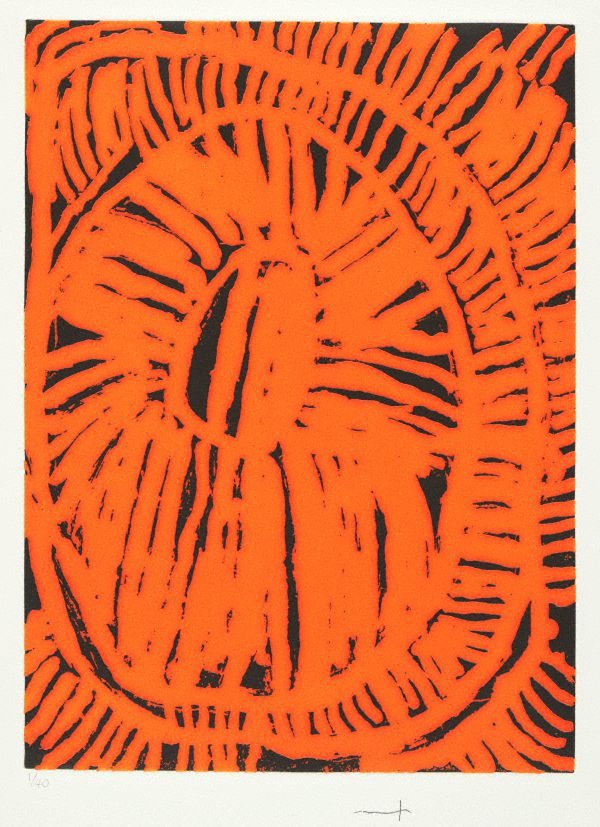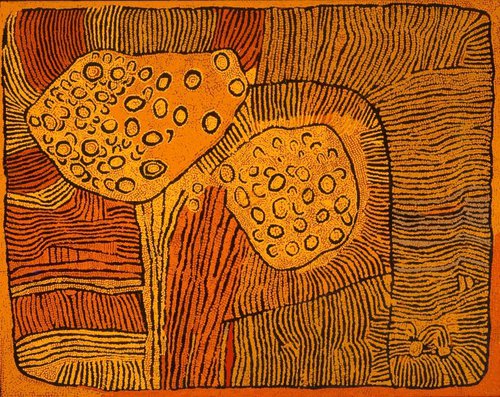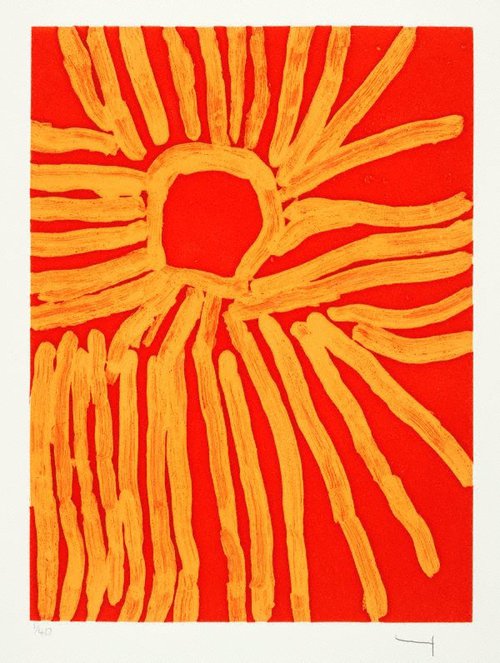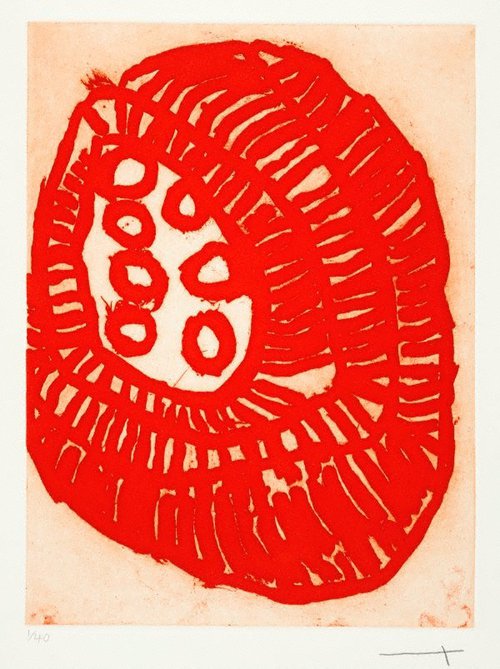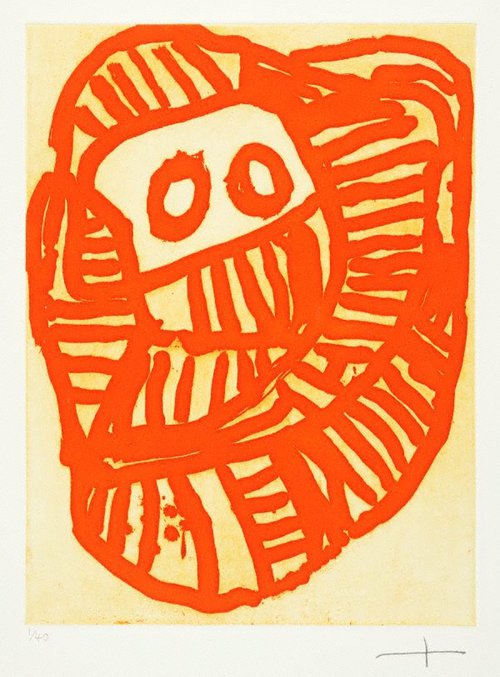Title
Marrapinti, from the suite Tjukurrpa Palurukutu, Kutjupawana Palyantjanya - same stories, a new way
2009
Artist
-
Details
- Place where the work was made
-
Papunya
→
Northern Territory
→
Australia
- Date
- 2009
- Media category
- Materials used
- etching on Hahnemühle rag paper
- Edition
- 1/40
- Dimensions
- 33.0 x 25.0 cm platemark; 55.0 x 45.0 cm sheet
- Signature & date
Signed l.r. beneath platemark with artist's mark, pencil "X". Not dated.
- Credit
- Purchased with funds provided by the Aboriginal Art Collection Benefactors 2011
- Location
- Not on display
- Accession number
- 421.2011.37
- Copyright
- © Naata Nungurrayi. Licensed by Aboriginal Artists Agency Ltd
- Artist information
-
Naata Nungurrayi
Works in the collection
- Share
-
-
About
In addition to showcasing the quality of Papunya Tula Artists as a whole, this suite of etchings emphasises the strength of each individual artist as they successfully translate their Tjukurrpa to the new medium of printmaking. Far from being a mere copy of their paintings in a different scale and medium each artists adapts their visual language to this new process with apparent ease, resulting in bold, confident works that are extraordinary in themselves, and when combined as a suite, are truly amazing.
The art centre documentation for this work states:
This etching depicts designs associated with the rockhole and soakage water site of Marrapinti, west of the Pollock Hills in Western Australia. The tali (sandhills) and puli (rocky outcrops) surrounding Marrapinti are represented by the lines in the etching. In ancestral times a large group of senior women travelled from Marrapinti to the rockhole site of Ngaminya in the east. While at Marrapinti the women made the nose bones, also know as marrapinti, which are worn through a hole made in the nose web. These nose bones were originally used by both men and women but are now only inserted by the older generation on ceremonial occasions. As the women continued their travels east they gathered the edible berries known as kampurarrpa or desert raisin from the small shrub Solanum centrale. These berries can be eaten straight from the bush but are sometimes ground into a paste and cooked in the coals to form a type of damper.
-
Places
Where the work was made
Papunya
-
Exhibition history
Shown in 1 exhibition
Papunya Tula works on paper, Art Gallery of New South Wales, Sydney, 13 Dec 2012–24 Mar 2013
